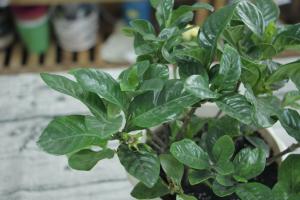How Much Space to Give Tomato Plants
Tomatoes are a popular crop that can be grown successfully in many different environments. However, one of the most important factors for success is giving the plants enough space to grow properly. In this article, we'll discuss how much space tomato plants need and how to ensure they have enough room to produce a bountiful harvest.
Determining Plant Spacing
The optimal spacing for tomato plants will depend on a few different factors. The first is the variety of tomato that you are growing. Determinate varieties, which grow to a certain height and then stop, typically require less space than indeterminate varieties, which continue growing and producing fruit until the end of the season. Additionally, the size of the mature plant will also play a role.
A general rule of thumb for spacing indeterminate tomatoes is to allow two to three feet between each plant. This will provide enough room for the plant to grow to its full potential and allow for adequate air ventilation between plants. For determinate tomatoes, which can be grown in cages or support structures, one to two feet of space is usually sufficient.
Planting in Raised Beds
If you're planting tomatoes in a raised bed, there are a few additional considerations to keep in mind. Raised beds can be a great option for growing tomatoes because they provide excellent drainage and allow for easy soil amendments. However, they can also be more challenging when it comes to plant spacing.
When planting tomatoes in a raised bed, it's important to ensure that each plant has enough space not just horizontally, but also vertically. This means allowing enough space between the top of the soil and the bottom of any overhanging structures, such as trellises or cages. A good rule of thumb is to allow at least 18 inches of space between the soil surface and the bottom of the support structure.
Spacing in Containers
If you're growing tomatoes in containers, it's important to choose the right size of pot. A container that is too small can stunt plant growth and negatively impact yield. In general, a minimum size of five gallons is recommended for indeterminate tomatoes, with larger varieties requiring up to 10 gallons of soil per plant. Determinate tomatoes can be grown in smaller containers, such as five-gallon buckets.
When it comes to plant spacing in containers, a good rule of thumb is to allow for one plant per container. It's also important to ensure that there is adequate drainage in the container to prevent waterlogging, as this can cause root rot and other plant problems.
The Importance of Proper Spacing
Giving tomato plants enough space to grow is essential for a variety of reasons. First, it ensures that each plant has access to adequate sunlight, water, and nutrients. When plants are too close together, they can compete for these resources, leading to stunted growth and reduced yield.
Additionally, proper spacing allows for adequate air circulation between plants. This can help prevent the spread of diseases and pests, which can quickly decimate a crop. Proper spacing also makes it easier to prune and harvest the plants, as there is less foliage to navigate through.
In Conclusion
Whether you're growing tomatoes in a garden bed or container, giving them enough space to grow is critical for success. Consider the type of tomato variety you're growing, the size of the mature plants, and any support structures you plan to use. With proper spacing, you can enjoy a bountiful harvest of juicy, delicious tomatoes.

 how many times do yo...
how many times do yo... how many planted tre...
how many planted tre... how many pine trees ...
how many pine trees ... how many pecan trees...
how many pecan trees... how many plants comp...
how many plants comp... how many plants can ...
how many plants can ... how many plants and ...
how many plants and ... how many pepper plan...
how many pepper plan...
































